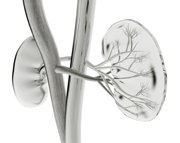Advertisment
BTS 2014 Report: Kidney transplant patients’ experiences of switching to generic immunosuppressants

Efficacy and Safety of Prescribing in Transplantation (ESPRIT) Group, Barts and the London School of Medicine and Dentistry, London by Atholl Johnston.As generic versions of cyclosporine, tacrolimus and MMF have become available in recent years, increasing numbers of transplant recipients are being switched to generic immunosuppression in an effort to save on public healthcare expenditure. However, whilst the economic benefits may be compelling, switching to generic narrow-therapeutic-index immunosuppressants may negatively affect patient safety unless strict monitoring protocols are adhered to. Over the next few years it is going to be important to evaluate the impact of generic switching on outcomes in real-life clinical practice. In the absence of a centralised outcomes database, surveys will be required to capture this information from patients and healthcare professionals. To assess the feasibility of such a survey on a large scale and to gain knowledge of the patient experience of generic switching, the Efficacy and Safety Of PRescribing In Transplantation (ESPRIT) group conducted a pilot survey amongst renal transplant patients between May and August 2013.
The survey comprised 13 questions and was delivered using the SurveyMonkey online tool. Patients were recruited to the survey via the Renal Patient Support Group Facebook page, charities including the Polycystic Kidney Disease Charity and the National Kidney Federation, and directly via transplant coordinators. A total of 76 patients submitted complete or partial responses; of these the majority was taking either tacrolimus (42%) or MMF (37%), with 8% taking cyclosporine. The vast majority of switches (84%) had been initiated by the transplant unit. Where stated, the reasons for switching were either financial (45%) or medical (40%); in 15% of cases no reason had been provided.
After switching to generic immunosuppression, the time taken to achieve stable drug levels varied from immediately to up to six months. The frequency of monitoring of drug levels ranged from no monitoring at all or only once after the switch, to weekly, fortnightly or quarterly. Around two-thirds (60%) of the patients reported that they had remained on their previous immunosuppressant dose after switching, whereas 16% had their dose reduced and 13% a dose increase. One in three (11 patients, 31%) of the patients who answered the question ‘Did you experiencing worsening or new side effects’ reported that this was indeed the case, with four of the patients in this group classing their side effects as ‘serious’ (mainly changes in creatinine levels). Of the patients responding to the question, 13% reported that they had had to go back onto their original immunosuppression.
Patients were also asked about their views on the switch; again, a considerable majority (70%) were unhappy or uncertain about the switch or did not know what to think about it, and 60% felt less than fully consulted. The investigators reasoned that although this type of research has its limitations, the pilot survey highlighted consistent trends in terms of lack of patient consultation, negative patient perceptions, and issues that could potentially affect patient safety such as drug level monitoring. The next step in this research will be to carry out a more extensive and scientifically robust survey among a wider group of transplant recipients who have been switched to generic immunosuppression.





